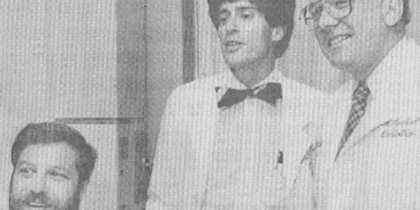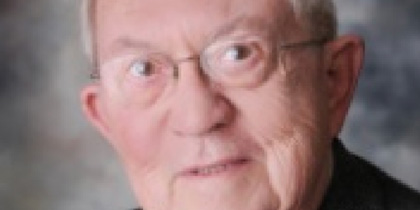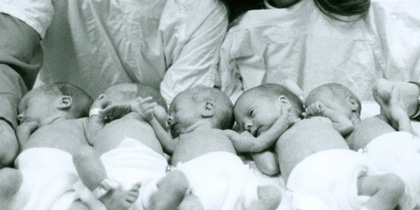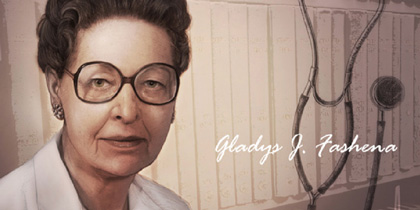History
“Any pediatrics department in a medical school evolves through stages of development analogous to the developmental stages of a newborn child progressing through infancy, childhood, and adolescence toward maturity.”
This quote comes from John D. Nelson, M.D., who joined the Department in 1959 as a research fellow. Dr. Nelson and other Division directors and faculty collaborated to preserve the life story of our organization. They compiled information based on personal recollections, documents and photographs, augmented with records from Helen Mayo and Bill Maina of UT Southwestern’s Library, and George Race from the medical school.
1940s
Business Leaders and Medical Faculty Join Forces
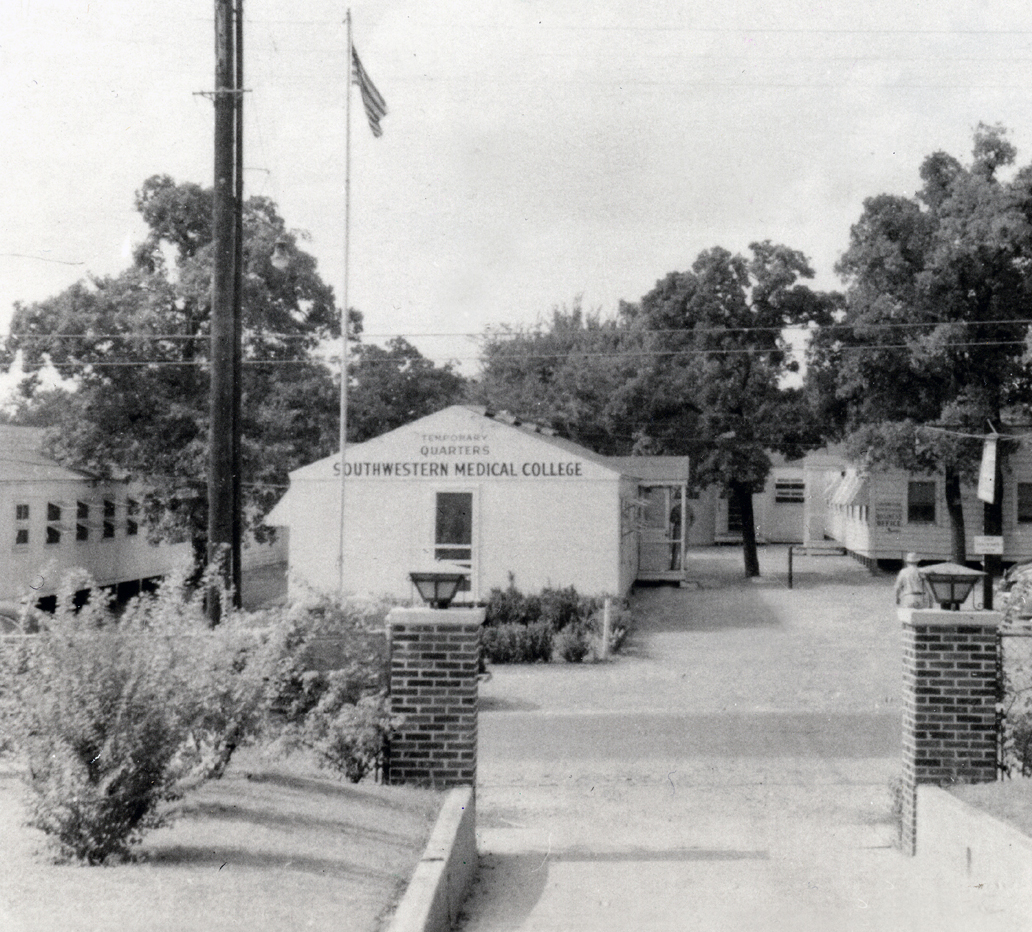
The birth of the Department of Pediatrics coincided with Baylor Medical College’s move to Houston, Texas, in 1943. Some of the Baylor faculty did not want to move, and a group of local businessmen agreed that Dallas should have its own medical school. With the support of the Southwestern Medical Foundation formed in 1939, the two groups founded Southwestern Medical College.
Clinical Training for Three Local Hospitals
The college’s Pediatrics Department grew out of a need created by three nearby hospitals. Parkland Memorial Hospital, originally founded in 1894, became the city-county hospital caring for the indigent.
The first pediatric facility in Dallas, Baby Camp (1913), evolved into Presbyterian Clinic then Richmond Freeman Clinic, and finally, Children's Hospital.
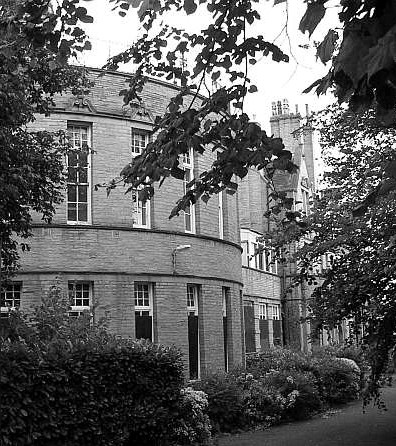
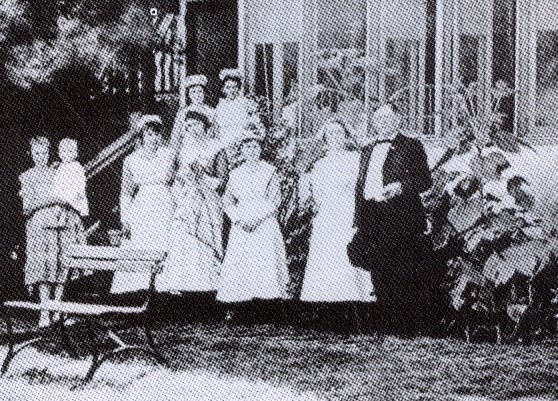
Bradford Babies Hospital was built in 1929, just a block away from the other two facilities.
Local pediatricians and surgeons provided care for many indigent children in these three facilities, which soon became the core clinical teaching venues. Southwestern Medical College transformed old Army barracks behind Parkland Hospital into departmental offices and research laboratories.
First Chairman of the Department of Pediatrics
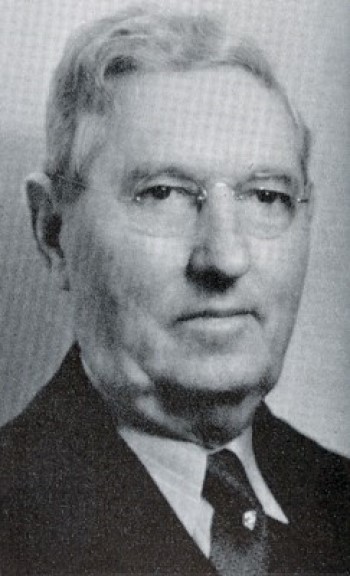
Hugh Leslie Moore, M.D., became the first Chairman of the Department of Pediatrics, and Tinsley R. Harrison, M.D., editor of the textbook of medicine, accepted the role of Dean of the medical school in 1944. Dr. Moore kept up almost full-time private practice during his tenure. There is no record of research being done or published at that time.
Faculty All Stars
Many of the private physicians who became instructors at Southwestern Medical College in 1943 continued volunteering their teaching skills for decades.
- Professors: Hugh Leslie Moore, John Garnett Young
- Associate Professors: Gladys J. Fashena, Jo Shirley Hodges, Percy Edward Luecke, Gordon McFarland, Robert Leslie Moore, Harold Thompson Nesbit
- Assistant Professors: John E. Ashby, William M. Bradford, Fred S. Bruchsa (later spelled Brooksaler), John Elbert Dunlap, Guy Leon Hacker, Bruce Knickerbocker, Halcuit Moore, Ramsey H. Moore, Jack Furman Perkins
- Instructors: Anthony Louis Alfieri, Robert Arthur Knox, George S. Littell, George Leslie Porter, Dorothy Wyvell
Medical School by the Numbers in 1943
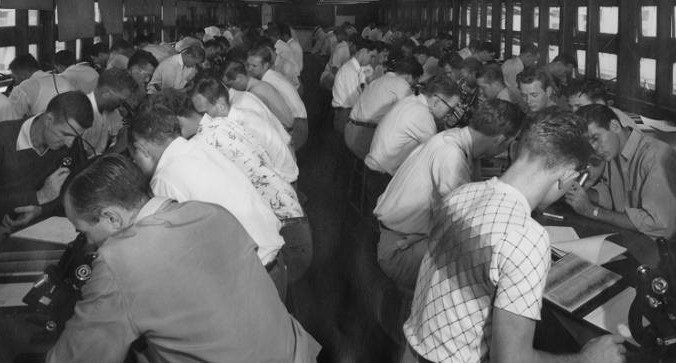
Entire medical school budget: $250,000
Professors’ salary: $5,000 per year for top professors, and $300 per month typical faculty.
Curriculum for third year students: 55 hours of “lectures and recitations" on the normal infant and child, methods of examination, general care and feeding of the growing infant, and the diseases of children
Curriculum for fourth year students: 77 hours in the Dispensary, 48 hours of clinic and ward bedside instruction, eight hours on feeding of normal infants at Hope Cottage adoption facility, and four hours in clinics at Children's Hospital and Bradford Hospital
Annual student costs:
- Tuition $525
- Hospitalization $8
- Optional yearbook $5
- Graduation fee $25
- Books/instruments/microscope/other supplies: $500 for the first year and $100 annually
1950s
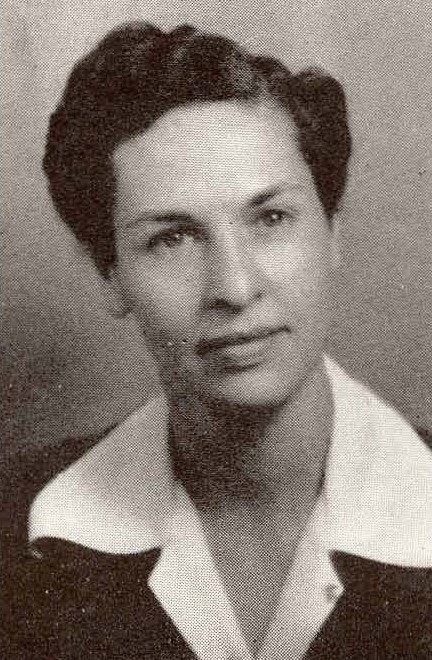
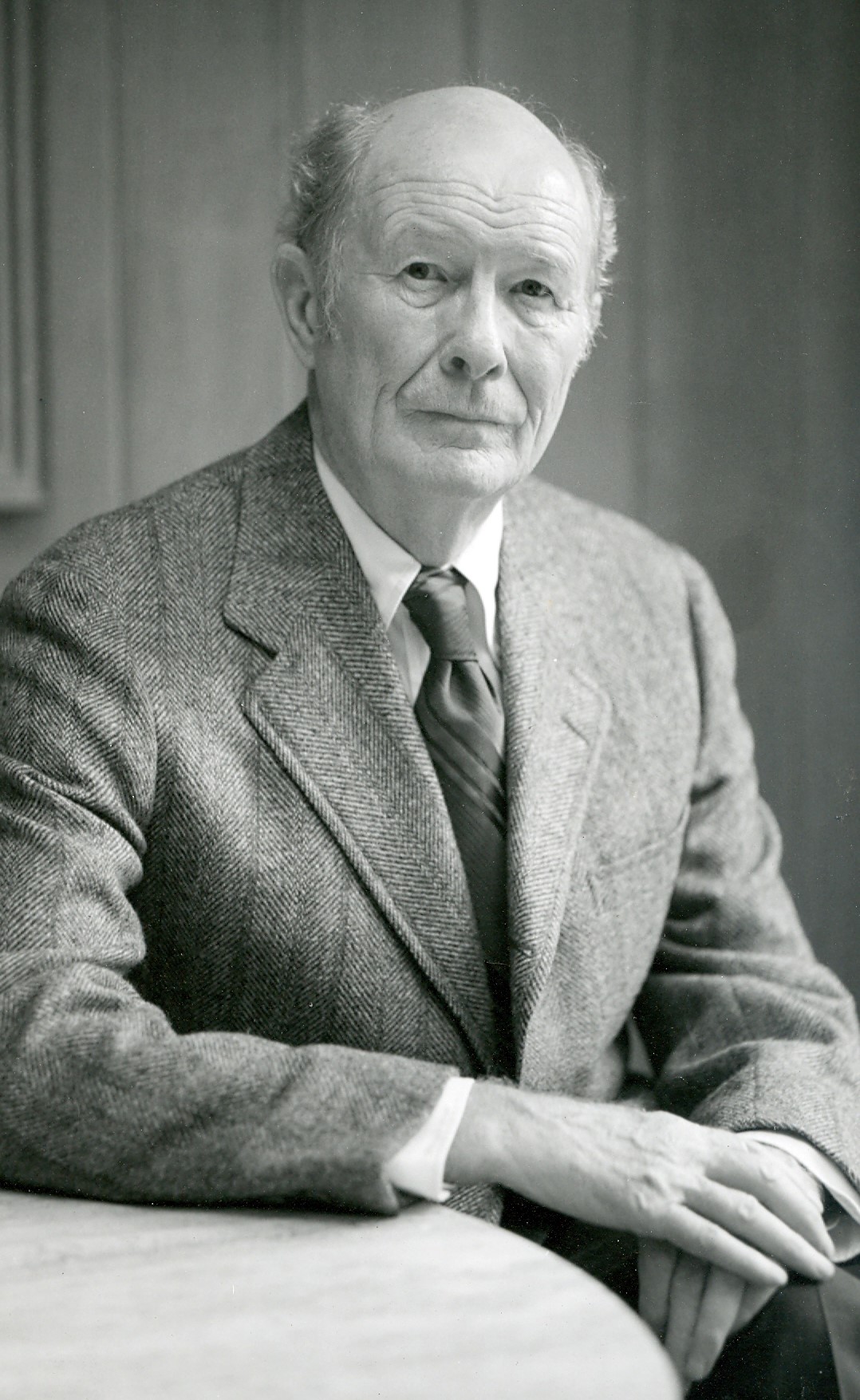
Ownership of Southwestern Medical College transferred to the University of Texas in 1949. Gilbert Forbes became Chairman of the Department of Pediatrics as a full-time faculty member in 1950, assembling other full-time members to enable the institute to finally offer a full scope of lectures and bedside teaching, clinical research and bench research.
Pediatric Surgery Leads the Way
An important milestone in the 1950s was Children’s Medical Center earning the distinction as the Texas center for diagnosis and correction of congenital heart defects. Head of the program, Gladys Fashena, trained as a clinical pathologist, was a respected clinician and teacher who developed into a skilled cardiologist. Alvis Johnson and trainee Kathryn Willis ran the cardiac division, but not as paid faculty members.
A generation of pediatric residents trained here during a landmark period in pediatrics as surgical treatment emerged as a viable method to correct congenital cardiac defects.
Recruitment Pays Off
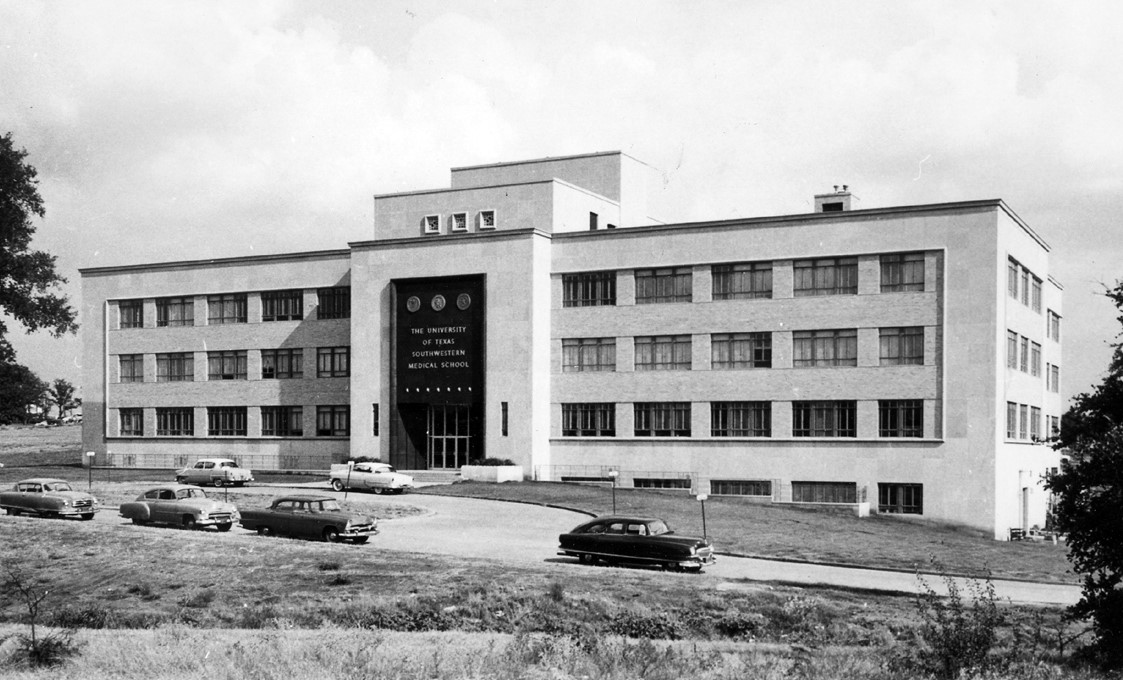
The school attracted Pediatric surgeons trained by well-known physician (later U.S. Surgeon General) C. Everett Koop, and surgical excellence became a boon to the entire pediatrics program. Department Chairman in 1954, Edward Platt began to recruit faculty trained in neonatology, rheumatology, infectious disease, hematology and oncology. By the late 1950s, they were doing clinical research and publishing their work.
More Milestones
- Clinical departments moved to a new building in 1958.
- The school grew to nearly 150 full-time faculty members, including nine in pediatrics.
- The pediatric house staff expanded to 16 by 1960.
- Enrollment averaged about 110 students annually and tuition cost about $600 per year.
- The State of Texas funded faculty salaries, allowing clinicians to care for patients pro bono.
1960s-1970s
Reaching Full Potential
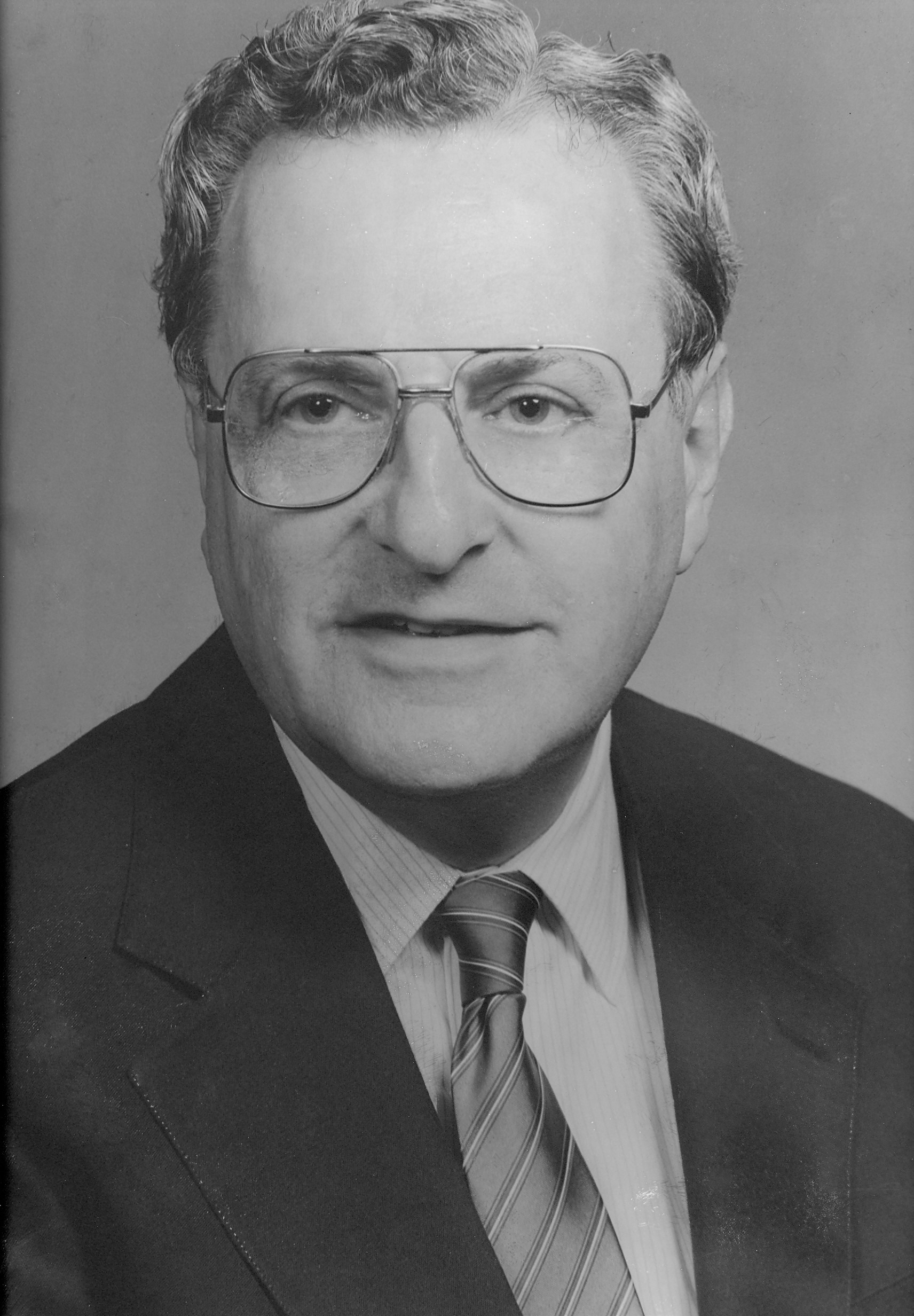
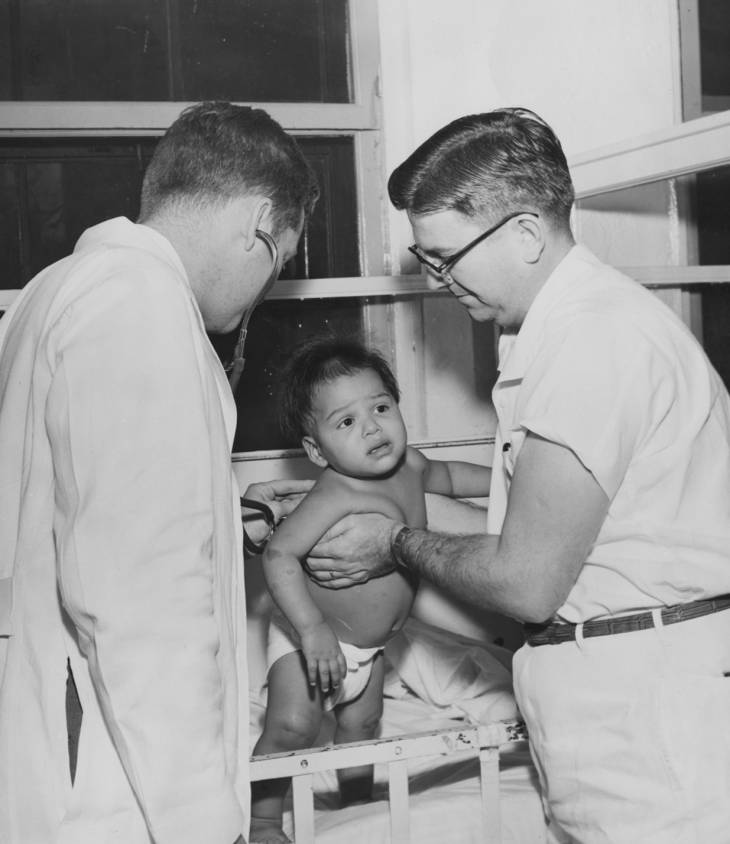
With the caliber of educators and researchers assembled in the 1950s, the next Chairman, Heinz Eichenwald, wanted his department to reach its full potential.
Facts and figures demonstrate his success:
- During his tenure (1964-1981), faculty size expanded to almost 100.
- The residency program grew to nearly 50 house staff.
- In 1968, Children's Medical Center Dallas moved its facilities to the UT Southwestern campus to give patients better access to the Medical School's specialists.
- Annual enrollment grew to more than 200 students by 1970.
Making Global Contributions
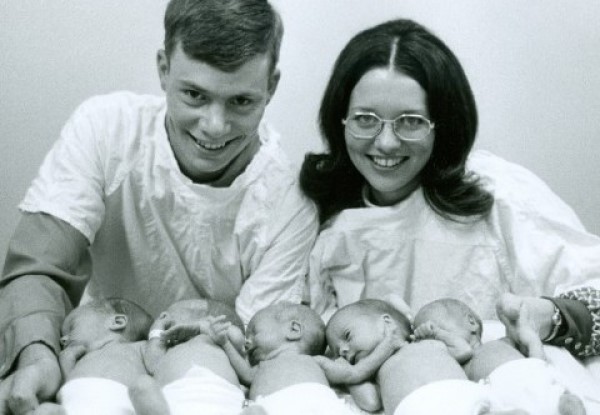
Just as UT Southwestern’s fellowship programs developed in many subspecialties, research efforts in also began to show productive results. Clinical services expanded and community outreach programs flourished. UTSW faculty members took an active part in governmental, medical and policy-making organizations on the international stage.
Funding from NIH, foundations and grants began to flow, and the Department of Pediatrics gained national recognition.For example, a pediatric infectious disease training program and fellowship developed. In 1965, Dr. John Nelson produced The Pocketbook of Pediatric Antimicrobial Therapy, which continued for 18 editions.
1980s-1990s
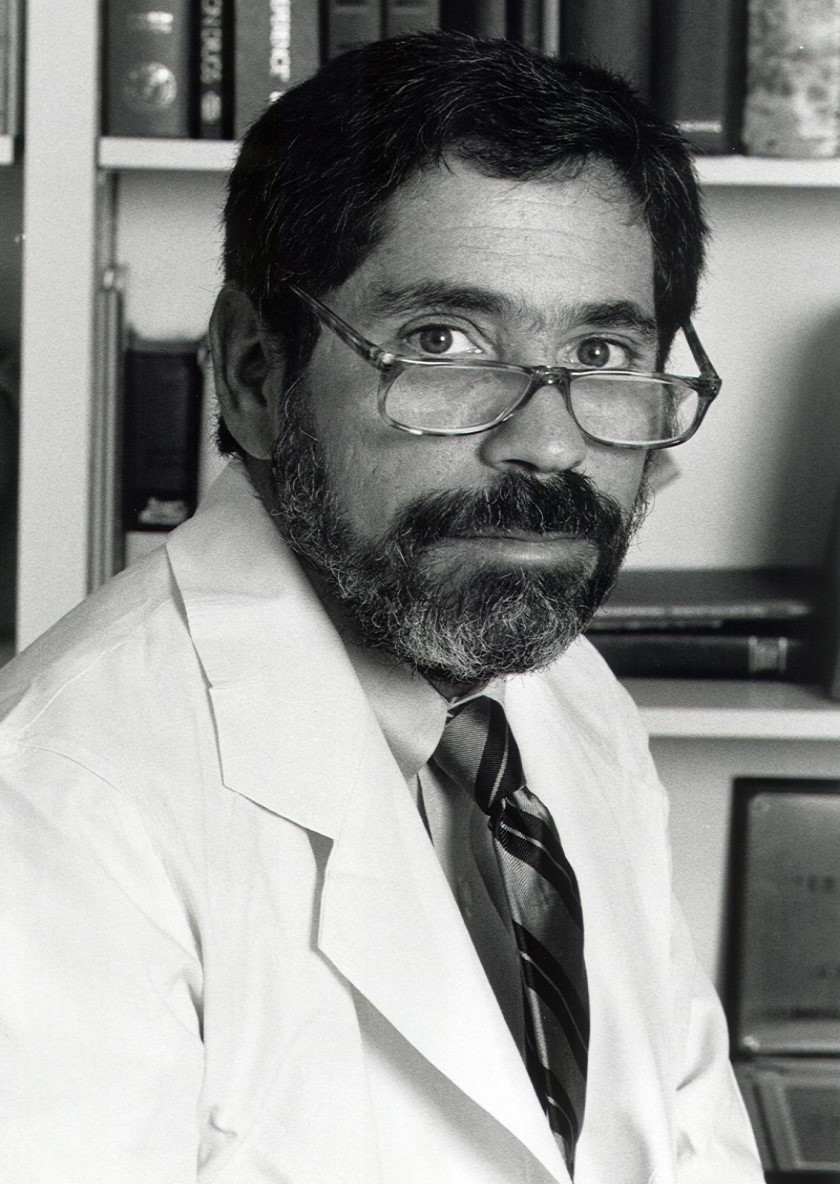
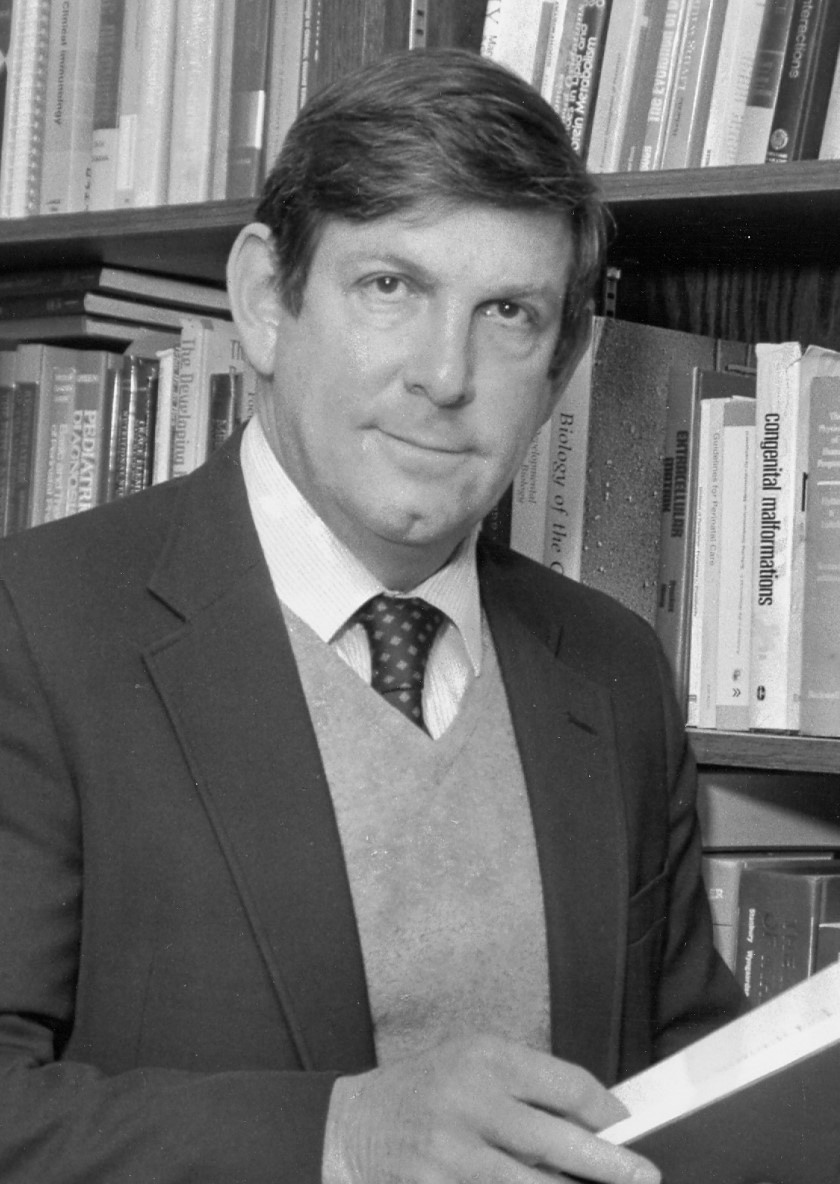
Joseph Warshaw, Chairman as of 1982, limited his tenure to five years due to his belief that shorter tenures might keep the Department of Pediatrics innovative, fresh and vigorous. He was the first to formally designate departmental divisions and division directors. During this time, clinical work and patient services expanded to meet the needs of the teaching hospitals.
Chairman Charles Ginsburg took over in 1988, beginning a tenure lasting 15 years and characterized by great energy and enthusiasm. Dr. Ginsburg expanded the scope and size of clinical activities, research positions, and community involvement. He devoted much of his time to teaching students and house staff.
Faculty Recognition
- Gilbert Forbes, M.D., received the John Howland Medal, the highest honor in academic pediatrics, from the American Pediatric in 1992.
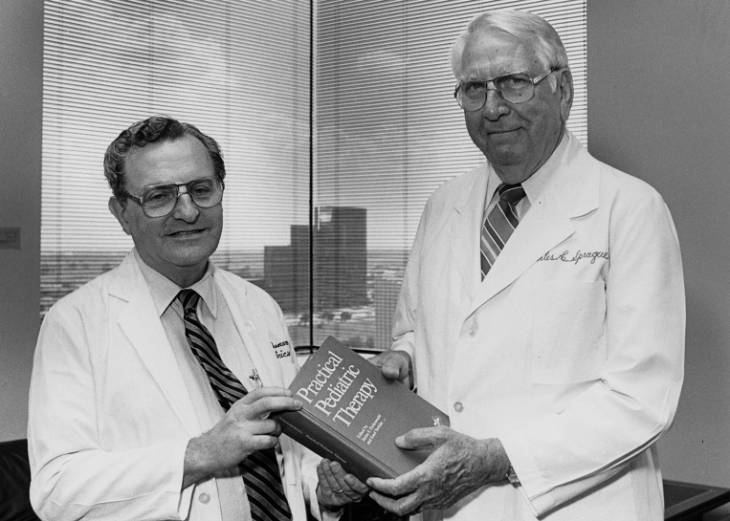
- Perrin White received the E. Mead Johnson Pediatric Research Award 1996
- Two faculty members were elected President of the Society for Pediatric Research: Joseph Warshaw (1982) and George Lister (1993).
2000s-2010s
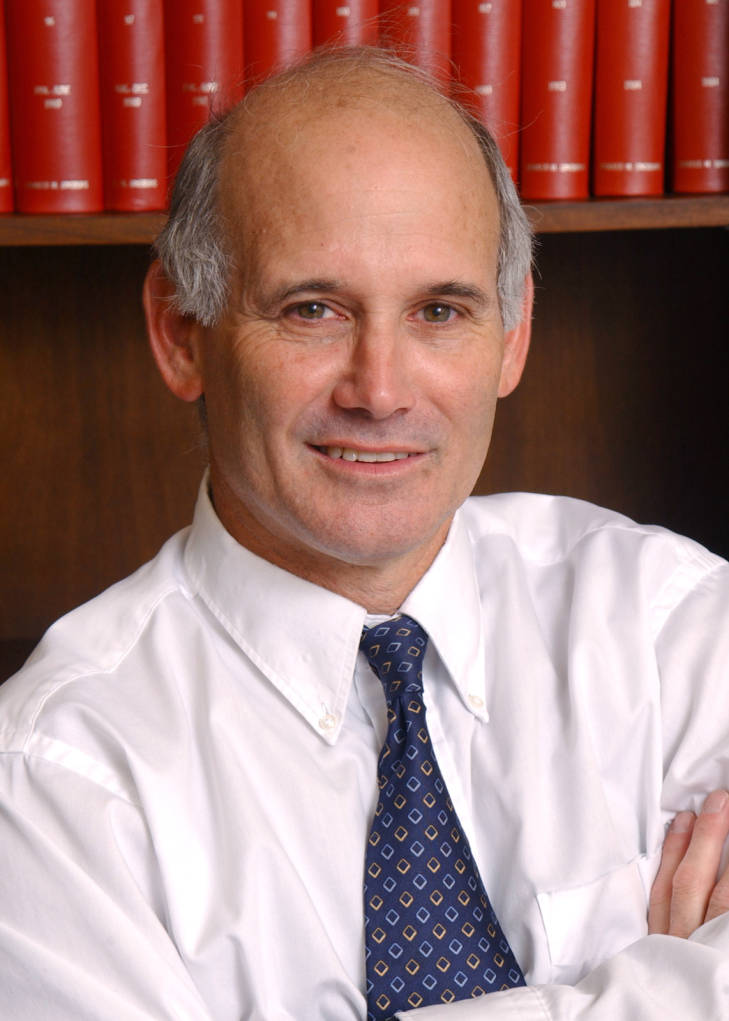
When appointed department Chairman in 2003, George Lister declared his focus on improving clinical research and developing more basic research activities. He also championed a more flexible, individualized curriculum for students and residents.
Pediatrics By the Numbers
- By 2009, the department included 227 faculty, 86 fellows, and 97 residents.
- Between 2005-2009, 15 pediatric faculty became fellows for the Clinical Scholars Program in the Department of Clinical Science.
- UT Southwestern established its first combined Internal Medicine and Pediatrics (Med/Peds) clinical practice and residency program in 2016.
- Professors instrumental in launching the Rees-Jones Center for Foster Care at Children’s Health include Anu Partap, Heidi Roman and Jaclyn Albin (2017).
- The MMK Foundation pledged $1 million in 2018 (split equally between Children’s Health and UT Southwestern Medical Center) to enhance hospital’s neonatal ICU, promote research at UT Southwestern, and provide unrestricted funds for pediatric critical care.
- The Cancer Prevention and Research Institute of Texas (CPRIT) awarded more than $37 million 2018 for cancer research and prevention, including more than $5 million to create a Pediatric Cancer Data Core and $12 million to recruit cancer investigators.

The physical size of UT Southwestern grew during this era, including the 2014 completion of the 460-bed William P. Clements Jr. University Hospital and the BioCenter at Southwestern Medical District in 2010. In 2020, UT Southwestern and Children’s HealthSM opened their first joint pediatric enterprise at the Reimagine RedBird development serving southern Dallas.
Current and former members of the faculty garnered many honors and awards:
- George McCracken received the Maxwell Finland Award from the National Foundation for Infectious Diseases (2004).
- George Lister received the Maureen Andrew Mentor Award of the Society for Pediatric Research (2004).
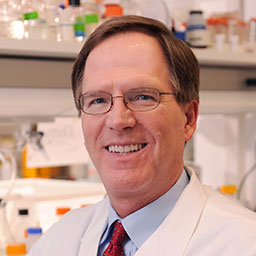

- Philip Shaul, M.D., was elected President of the Society for Pediatric Research (2006).
- George Lister was elected President of the American Pediatric Society (2008), and Chairman of the Board of the American Board of Pediatrics (2004).
- George Buchanan received the Distinguished Career Award from the American Society of Pediatric Hematology/Oncology (2007).
- Fangming Lin was the first recipient of the Norman Siegel Pediatric Research Grant Award from the American Society of Nephrology and the American Society of Pediatric Nephrology (2007).
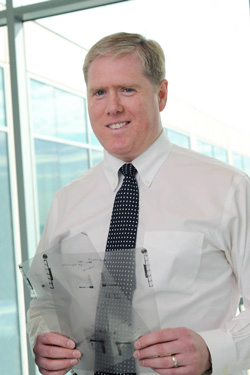
- Robert Wiebe was co-recipient of the Emergency Medical Services for Children National Heroes Award (2007).
- Lori A. Karol served as the first female President of the Pediatric Orthopaedic Society of North America (POSNA) (2016).
- Sean Morrison was named to the National Academy of Medicine (2018).
- Craig A. Peters received the John W. Duckett, Jr., MD Pediatric Urology Research Excellence Award (2018).
- Ralph DeBerardinis received the 2019 Edith and Peter O’Donnell Award from The Academy of Medicine, Engineering and Science of Texas.
- Angela Mihalic received the 2019 Minnie Stevens Piper Foundation’s Piper Professor Award recognizing outstanding college professors across Texas.

